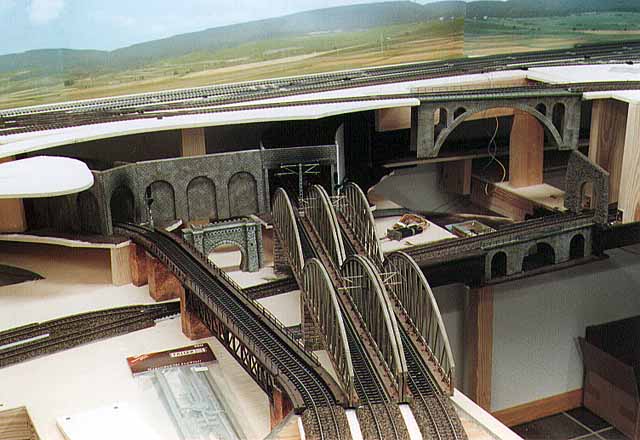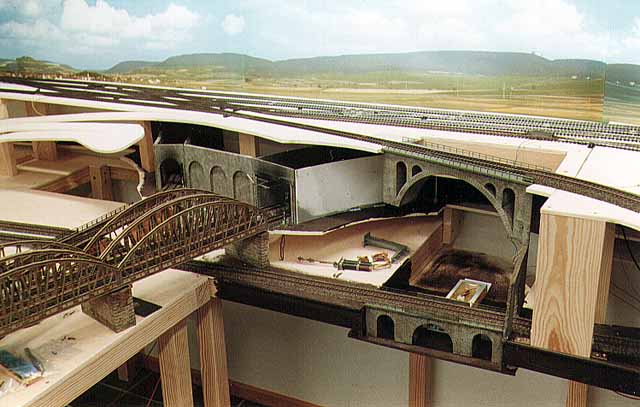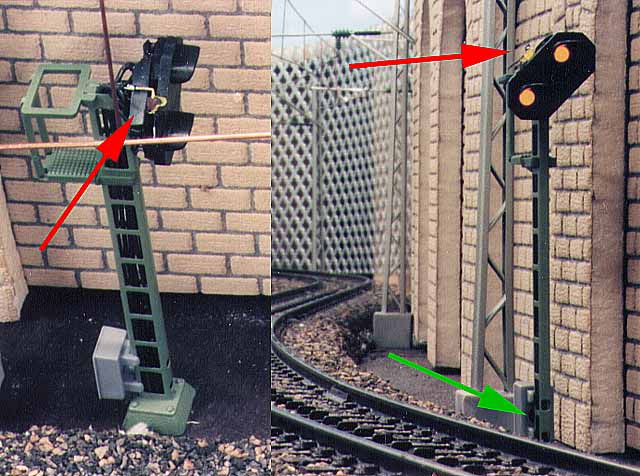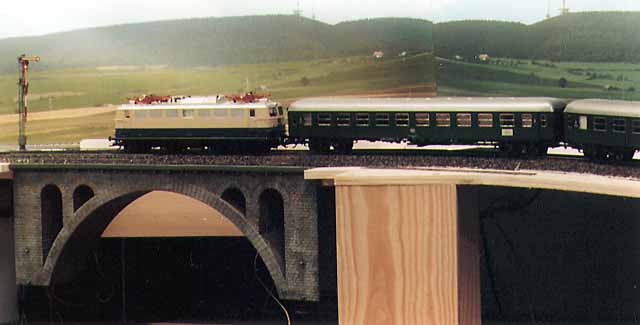History of my Model Railway
December 1997

After installing the catenary system for the double tracked main route (the mounts were attached to the bridge railings, just like with the prototype) it was time to work on the tunnel. Since a normal pipe type tunnel entrance did not suit me, I decided to construct under passes. I used red Merkur wall plates that I weathered and modified. They fit in well with the stone bridges to the right.

Above the newly constructed under pass, the branch off to the main railway station will be built. This station is planned as a head station. So that not all traffic ends there, the trains can be directed across the viaduct to a side route, leading to the upper shadow station.

The track layout of this section looks complicated, but not without reason. The German Railway avoids using double slip turnouts on main routes with heavy traffic, because they are maintenance intensive and must be crossed slowly. For this reason I only use one of them in the actual railway yard where the allowable top speed is only 40 km/h (red arrow). As counter I use track 2223 instead of the recommended 2274 to obtain especially small distances between the tracks (green arrow). This creates a less uniform track picture as is usually seen in most model railway setups. For the continuing stretches I only use wide radius turnouts and a crossing (blue arrow).

There will be three shunting tracks at the railway station (visible in front of the train) which are laid out for passing through. In front of the first track a dead-end track branches off to the loading ramp (roter Pfeil). On track 4 freight trains will arrive (as demonstrated in the picture), the locomotives will be de-coupled and the trains can be broken apart.

Some platform parts are already laid out temporarily on the top level, while a TEE train runs along the parade stretch on the middle level. It is coming from the upper shadow station, which is situated below the main station and has four shunting tracks. The Loreley tunnel on the bottom level leads to the large shadow station with 8 shunting tracks.

The turntable was first weathered with brown tones and then sunk into the plywood. The foundations for the locomotive sheds come from two 5-tracked Pola ring sheds. The coal yard is from Faller.

Finally I had room to park my locomotives and naturally this event had to be documented in a picture. The Insider locomotive of 1997 with condensation tender just fits onto the turntable.

Installing the catenary system makes good progress. The innermost track remains without catenary and is only used by steam and diesel engines, since it is for local traffic only.

The distance between the exit of the upper shadow station and the first main signal is too short to install a pre-signal. It should, so to speak, invisibly IN the tunnel. Since the view of the main signal is blocked due to the curve, I decided to install a pre-signal repeater, according to the rules of the German Railway Company. To do this, I removed the faceplate (green arrow) and glued a miniature LED beside the faceplate (roter Pfeil). Later this LED will also be shielded like the prototype.

Finally a picture of my first Roco Locomotive that I rebuilt with a 6090 decoder. This locomotive had slight problems starting on an incline when towing lit railway cars, due to the drag of the pick up shoes. Locomotives with 60902 decoder have far fewer problems.










